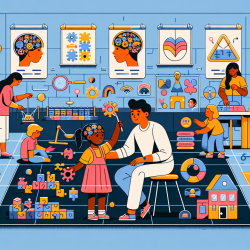Understanding the Misuse of Psychoactive Prescription Medications Among Youth
The misuse of psychoactive prescription medications among youth and young adults is a growing concern, as highlighted in the research article "Medical use and misuse of psychoactive prescription medications among US youth and young adults." This comprehensive study sheds light on the prevalence and correlates of such misuse, providing valuable insights for practitioners working with children and adolescents.
Key Findings from the Research
The study, based on data from the 2015–2018 National Survey of Drug Use and Health, reveals alarming statistics:
- 25% of youth aged 12–17 reported using psychoactive prescription medications, with 20.9% of them misusing these drugs.
- Among young adults aged 18–25, 41% reported using these medications, with 34.7% reporting misuse.
- The misuse rates were highest for stimulants and tranquillisers among both age groups.
Implications for Practitioners
For practitioners, these findings emphasize the need for vigilant monitoring and proactive interventions. Here are some strategies to consider:
- Screening for Substance Use: Regularly screen for both prescription and non-prescription substance use among youth. Early identification can lead to timely interventions.
- Education and Awareness: Educate youth and their families about the risks associated with misuse of prescription medications. Awareness can be a powerful tool in prevention.
- Collaborative Care: Work closely with other healthcare providers to ensure a comprehensive approach to treatment, addressing both mental health and substance use issues.
- Behavioral Interventions: Implement behavioral interventions that focus on coping skills, self-advocacy, and psychoeducation to support youth in managing their health responsibly.
Encouraging Further Research
The study underscores the importance of continued research in this area. Practitioners are encouraged to explore the following avenues:
- Longitudinal Studies: Conduct studies that track the long-term outcomes of youth who misuse prescription medications.
- Intervention Efficacy: Evaluate the effectiveness of various intervention strategies to determine best practices for prevention and treatment.
- Social Norms and Accessibility: Investigate the social factors contributing to medication misuse and develop strategies to address these issues.
Conclusion
The misuse of psychoactive prescription medications among youth is a critical issue that demands attention. By implementing data-driven strategies and encouraging further research, practitioners can play a pivotal role in mitigating this problem and fostering healthier outcomes for children and young adults.
To read the original research paper, please follow this link: Medical use and misuse of psychoactive prescription medications among US youth and young adults.










